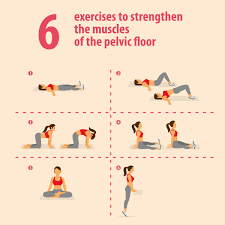A nurse midwife is examining a client who is a primigravida at 42 weeks of gestation and states that she believes she is in labor. Which of the following findings confirm to the nurse that the client is in labor?
"Report of pain above the umbilicus"
"Amniotic fluid in the vaginal vault"
"Brownish vaginal discharge"
"Cervical dilation"
The Correct Answer is D
Choice A: Pain above the umbilicus may be associated with various conditions during pregnancy, but it is not a definitive sign of labor.
Choice B: The presence of amniotic fluid in the vaginal vault (rupture of membranes or "water breaking") can be a sign of labor, but it is not the most specific indicator.
Choice C: Brownish vaginal discharge may indicate the passage of old blood or "bloody show," which can be a sign of impending labor. However, it is not as reliable as cervical dilation.
Choice D: Cervical dilation is one of the most definitive signs of labor. As the cervix opens and thins (effaces), it allows for the baby's passage through the birth canal. Cervical dilation is an essential indicator of active labor.
Nursing Test Bank
Naxlex Comprehensive Predictor Exams
Related Questions
Correct Answer is A
Explanation
Choice A: Kegel exercises are specifically designed to strengthen the pelvic floor muscles, which play a crucial role during childbirth. Strengthening these muscles can aid in better control during labor and delivery, facilitating stretching and reducing the risk of injury.
Choice B: Kegel exercises do not have a direct impact on preventing constipation during pregnancy. However, they may help improve bowel control and prevent fecal incontinence.
Choice C: While Kegel exercises can improve posture and core strength, their primary benefit lies in strengthening the pelvic muscles, not directly reducing backaches throughout pregnancy.
Choice D: Kegel exercises are not intended to prevent stretch marks on the abdomen. Stretch marks are caused by the stretching of the skin during pregnancy and are not related to pelvic muscle exercises.

Correct Answer is B
Explanation
A. Maintain the client in the lithotomy position: The lithotomy position is not typically
maintained during the active phase of labor. It is used during the pushing stage (second stage) of labor.
B. Encourage the client to empty her bladder every 2 hr: A full bladder can impede fetal descent and progress during labor, so encouraging the client to empty her bladder regularly is essential.
C. Remind the client to bear down with each contraction: Bearing down during the active phase of labor is not appropriate, as it may lead to premature pushing and cervical swelling.
D. Perform vaginal examinations frequently: Frequent vaginal examinations can increase the risk of infection and should be minimized during labor.
Whether you are a student looking to ace your exams or a practicing nurse seeking to enhance your expertise , our nursing education contents will empower you with the confidence and competence to make a difference in the lives of patients and become a respected leader in the healthcare field.
Visit Naxlex, invest in your future and unlock endless possibilities with our unparalleled nursing education contents today
Report Wrong Answer on the Current Question
Do you disagree with the answer? If yes, what is your expected answer? Explain.
Kindly be descriptive with the issue you are facing.
